Lorenzo Lotto (1480 – 1556)
Get a Lotto Certificate of Authenticity for your painting (COA) for your Lotto drawing.
For all your Lotto artworks you need a Certificate of Authenticity (COA) in order to sell, to insure or to donate for a tax deduction.
Getting a Lotto Certificate of Authenticity (COA) is easy. Just send us photos and dimensions and tell us what you know about the origin or history of your Lotto painting or drawing.
If you want to sell your Lotto painting or drawing use our selling services. We offer Lotto selling help, selling advice, private treaty sales and full brokerage.
We have been authenticating Lotto and issuing certificates of authenticity since 2002. We are recognized Lotto experts and Lotto certified appraisers. We issue COAs and appraisals for all Lotto artworks.
Our Lotto paintings and drawings authentications are accepted and respected worldwide.
Each COA is backed by in-depth research and analysis authentication reports.
The Lotto certificates of authenticity we issue are based on solid, reliable and fully referenced art investigations, authentication research, analytical work and forensic studies.
We are available to examine your Lotto painting or drawing anywhere in the world.
You will generally receive your certificates of authenticity and authentication report within two weeks. Some complicated cases with difficult to research Lotto paintings or drawings take longer.
Our cLottonts include Lotto collectors, investors, tax authorities, insurance adjusters, appraisers, valuers, auctioneers, Federal agencies and many law firms.
We perform Lorenzo Lotto art authentication, appraisal, certificates of authenticity (COA), analysis, research, scientific tests, full art authentications. We will help you sell your Lorenzo Lotto or we will sell it for you.
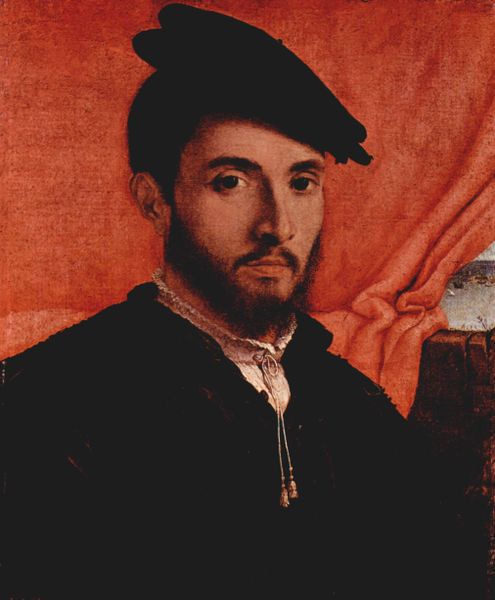
Lorenzo Lotto was a Northern Italian painter draughtsman and illustrator, traditionally placed in the Venetian school. He painted mainly altarpieces, religious subjects and portraits. While he was active during the High Renaissance, he already constitutes, through his nervous and eccentric posings and distortions, a transitional stage to the first Florentine and Roman Mannerists of the 16th century.
Born in Venice, he worked in Treviso (1503-1506), the Marches (1506-1508), in Rome (1508-1510), Bergamo (1513-1525), in Venice (1525-1549), Ancona (1549) and finally as a Franciscan lay brother in Loreto (1549-1556).
There is almost no information about his training. As a Venetian he was influenced by Giovanni Bellini as he had a good knowledge of contemporary Venetian painting. Though Bellini was doubtless not his teacher, the influence is clear in his early painting Virgin and Child with St. Jerome (1506) (National Gallery of Scotland, Edinburgh). However, in his portraits and in his early painting Allegory of Virtue and Vice (1505) (National Gallery of Art, Washington) he shows the influence of Giorgione’s Naturalism. As he grew older his style changed, perhaps evolving, from a detached Giorgionesque classicism, to a more vibrant dramatic setpiece, more reminiscent of his contemporary from Parma, Correggio.
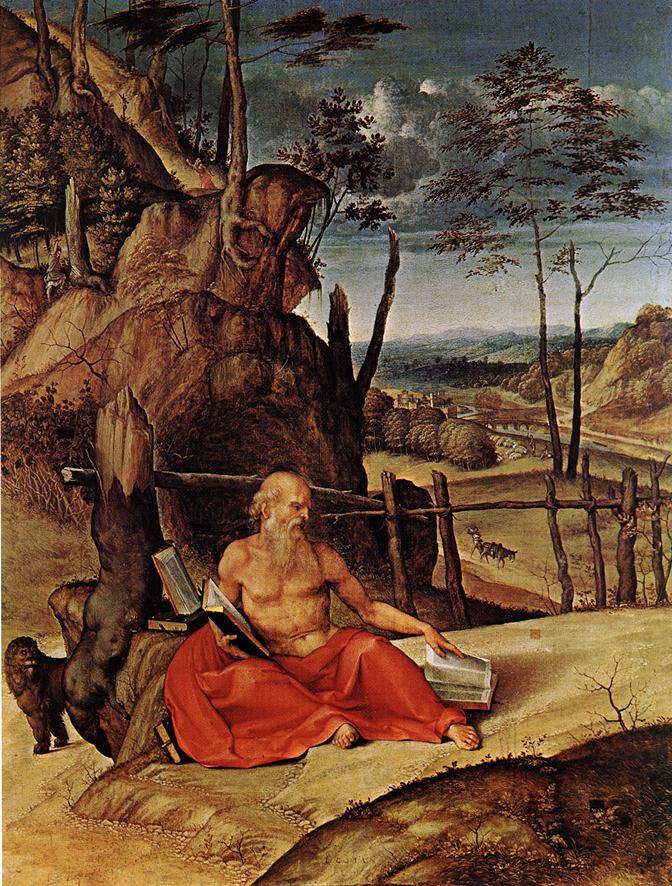
Lorenzo Lotto soon left Venice. The competition for a young painter would have been too great with established names such as Giorgione, Palma il Vecchio and certainly with Titian. Nevertheless, Giorgio Vasari mentions in the third part of his book Vite that Lotto was a friend of Palma il Vecchio.
In Trevisio, a prospering town within the domain of the republic of Venice, he came under the patronage of bishop Bernardino de’Rossi. The already mentioned painting Allegory of Virtue and Vice was intended as an allegorical cover of his portrait (1505) of the bishop (now in Museo di Capodimonte in Naples), who had survived an assassination attempt. The painting St. Jerome in the Desert (1500 or 1506) (Louvre, Paris) shows his youthful inexperience as a draughtsman, however the dramatic rocky landscape is accentuated by the red garment of the saint. At the same time he gives an early impression of his skill as a miniaturist.

He painted his first altarpieces for the parish church S Cristina al Tiverone (1505) and the baptistery of the Cathedral of Asolo (1506), both still on display in those churches.
In 1508 he began the Recanati polyptych altarpiece for the church of S Domenico. This two-tiered, rather conventional painted polyptych consists of six panels. His portrait Young Man against a White Curtain (1508) is a famous painting from this period (Kunsthistorisches Museum, Vienna).
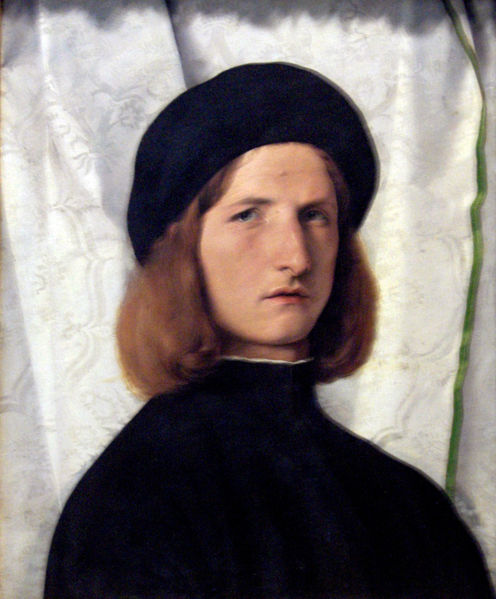
As he became a respected painter, he came to the attention of Bramante, the papal architect, who was passing through Loreto (a pilgrimage site near Recanati). Lorenzo Lotto was invited to Rome to decorate to papal apartments. Nothing however survives of his work, as they were destroyed a few years later. This was problably because he had imitated the style of Raphael, a rapidly rising star in the papal court. He had done this before in the Transfiguration in the Recanati polyptych.
In 1511 he was at work for the confraternity of the Buon Gesù in Jesi, painting an Entombment (Pïn. Civ., Jesi). Soon after, he was painting altarpieces in Recanati, a Transfiguration (now in the Pinacoteca Comunale, Recanati) and a fresco St Vincent Ferrer for the church San Domenico.
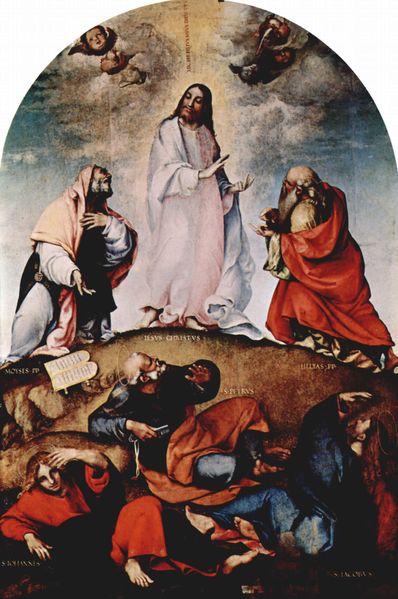
His work in Bergamo, the westernmost town of the Venetian republic, and surrounding areas was to prove his best and most productive artistic period. He received many commissions from wealthy merchants, well-educated professionals and local aristocrats. He had become a rich colourist and an experienced draughtsman. He developed the concept of the psychological portrait, rebealing the thoughts and emotions of his subjects. In this he was continuing the tradition started by Antonello da Messina. A good example is his Portrait of a Young Man with a Book (now in the Accademia, Venice).
He started in 1513 with a monumental altarpiece Pala Martinengo in the Dominican church of S Stefano in Bergamo. This altarpiece was commissioned by Count Alessandro Martinengo-Coleoni, grandson of the famous condottiere Bartolomeo Colleoni. It would be finished in 1516. This altarpiece shows us the influence of Bramante and Giorgione. His next assignment was the decoration of the churches S Bernardino and S Alessandro in Colonna with frescoes and distemper paintings. He would finish five more altarpieces between 1521 and 1523.
In 1523 he went for a brief stay in the Marches, obtaining several commissions for altarpieces. He would paint these during his stay in Venice.
His next paintings are mostly wall paintings. In 1524 he painted a series of frescoes with the lives of saints (such as St. Clare) in the Suardi chapel in Trescore (near Bergamo). In the details he depicts scenes of every life, such as in the fresco Martyrdom of St. Claire.
In the same fresco he portrays Christ with vines sprouting from his hands, illustrating the words of the New Testament : “I am the vine, you are the branches” (John 15-5).
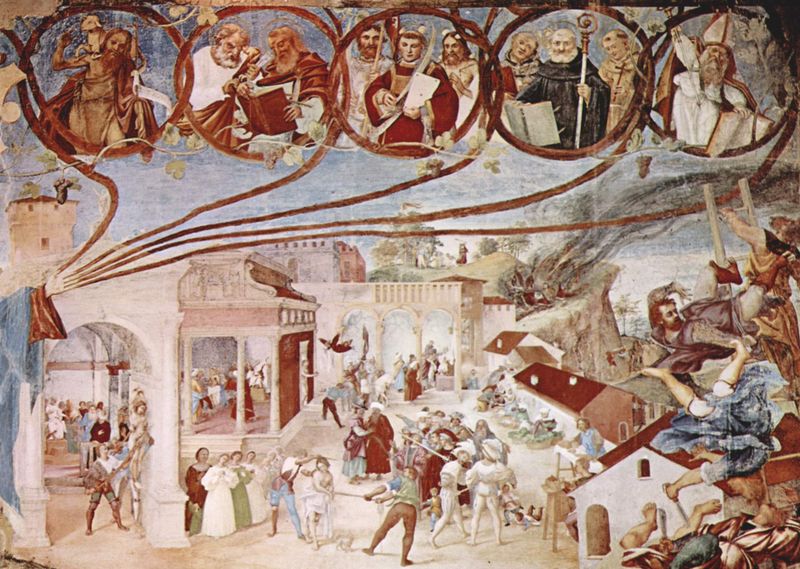
In 1524 he also painted the cartoons with Old Testament stories as models for the intarsia panels for the choir stalls of S Maria Maggiore in Bergamo.
More than twenty private paintings date from the same period. They are mostly of religious and pious subjects such as Madonnas or a Deposition, used for worship at home. They are painted in the Classical tradition, but Lotto adds a personal touch to the intense emotions. Using contrasting poses and opposing movement, he breaks the traditional symmetry of the Virgin surrounded by angels and saints.
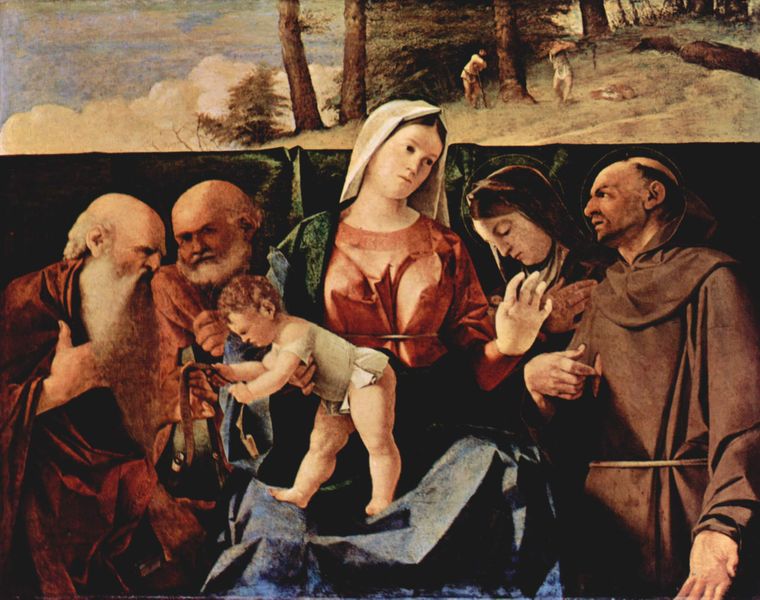
Lorenzo Lotto first stayed at the Dominican monastery of SS Giovanni e Paolo. But he to leave after a few months after a conflict with friar Damiano Zambelli, the intaglia artist (See : Basilica of San Domenico). To cope with the many commissions, he founded a workshop. He shipped five altarpieces for churches in the Marches and another one for the church S Maria Assunta in Celano (near Bergamo). Another altarpiece was for the Venetian church of S Maria dei Carmini, portraying St. Nicholas of Bari in Glory.
As Venice was a city of great wealth and as popularity increased, he received many orders for private paintings, including ten portraits, including Portrait of a Young Man (Gemäldegalerie, Berlin). His portrait of Andrea Odoni (Royal Art Collection, Hampton Court) (1527) would later influence the portrait of Jacopo Strada by Titian (1568) (Kunsthistorisches Museum, Vienna). But in Venice he was overshadowed by his rival Titian, who dominated the artistic scene. Lorenzo Lotto left Venice in 1532 to Treviso.
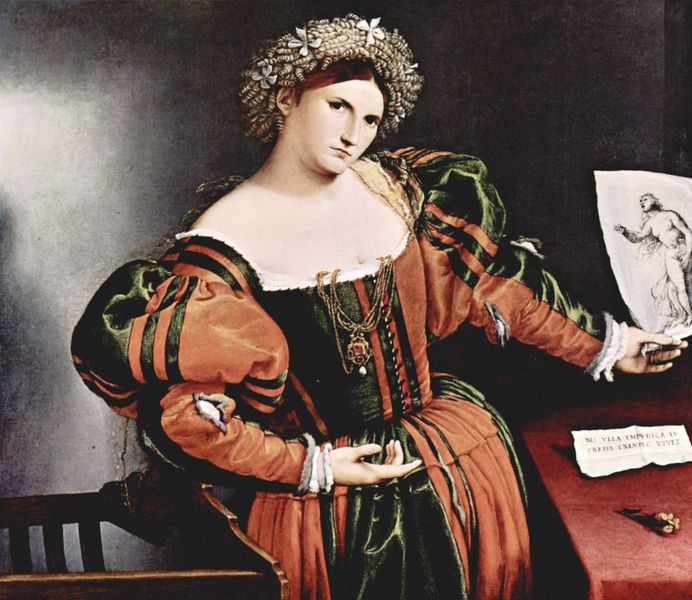
In this last period of his life, Lorenzo Lotto would frequently move from town to town, searching for patrons and commissions. In 1532 he went to Treviso. Next he spent about seven years in the Marches (Ancona, Macerata en Jesi), returning to Venice in 1540. He moved again to Treviso in 1542 and back to Venice in 1545. Finally he went back to Ancona in 1549.
This was a productive period in his life, during which he painted several altarpieces and portraits :
- Santa Lucia before the Judge, 1532, Jesi, Pinacoteca comunale
- The Sleeping Child Jesus with the Madonna, St. Joseph and St. Catherine of Alexandria, 1533, Bergamo, Accademia Carrara
- Portrait of a Lady as Lucretia, 1533, National Gallery, London.
- Holy Family with SS Jerome, Anna and Joachim, 1534, Firenze, Uffizi
- Holy Family, ca 1537, Paris, Louvre
- Portrait of a Young Man, Firenze, Uffizi
- Crucifixion, Monte San Giusto, Church of S Maria in Telusiano
- Rosary Madonna, 1539, Cingoli, Church of San Nicolò
- Portrait of a Man, 1541, Ottawa, National Gallery of Canada
- Bust of a Bearded Man, 1541, ascribed, San Francisco, Fine Arts Museum
- The Alms of Saint Anthony, 1542, Venezia, church SS Giovanni e Paolo
- Madonna and four Saints, 1546, Venezia, Church of San Giacomo dell’Orio
- Portrait of fra’ Gregorio Belo da Vicenza, 1548,New York, Metropolitan Museum
- Assumption, 1550, Ancona, church San Francesco alle Scale
- The Crossbowman, 1551, Rome, Pinacoteca Capitolina
- Portrait of an Old man, ascribed, ca 1552, Saint Petersburg, Ermitage
- Presentation in the Temple, 1555, Loreto, Palazzo Apostolico
At the end of his life it was becoming increasingly difficult for him to earn a living. Furthermore, in 1550 one of his works had an unsuccessful auction in Ancona. As recorded in his personal account book, this deeply disillusioned him. As he had always been a deeply religious man, he entered in 1552 the Holy Sanctuary at Loreto, becoming a lay brother. During that time he decorated the basilica of S Maria and painted a Presentation in the Temple for the Palazzo Apostolico in Loreto. He died in 1556 and was buried, at his request, in a Dominican habit.
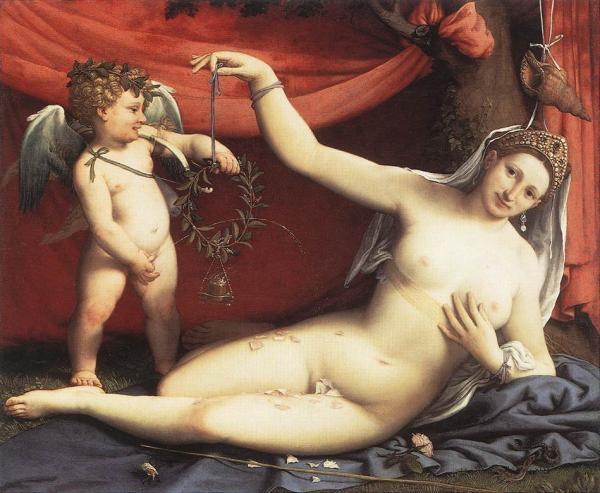
Giorgio Vasari included Lotto’s biography in the third volume of his book Vite. Lorenzo Lotto himself left many letters and a detailed notebook (Libro di spese diverse, 1538-1556), giving a certain insight in his life and work. Among the many painters he influenced are likely Giovanni Busi
During his lifetime, Lorenzo Lotto was a well-respected painter and certainly popular in Northern Italy. He is traditionally included in the Venetian School, but his independent career actually places him outside the Venetian art scene. He was certainly not as highly regarded in Venice as in the other towns were he worked. He had an own stylistic individuality, even an idiosyncratic style. After his death, he gradually became neglected and then almost forgotten. This could be attributed to the fact that his oeuvre now remains in lesser known churches or in provincial musea. Even the top musea of the world possess each only a few of his paintings. Thanks to the work of the art historian Bernard Berenson, he was rediscovered and acclaimed as a master at the end of the 19th century.

Still wondering about an Italian painting in your family collection? Contact us…it could be by Lorenzo Lotto.
Reviews
1,217 global ratings
5 Star
4 Star
3 Star
2 Star
1 Star
Your evaluation is very important to us. Thank you.
